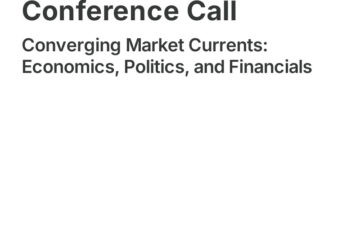On Thursday, January 23, at 10 AM PST, Guild will host its conference call for the first quarter of 2020, and in this week’s letter, we’ll give you a rundown of some of what we’ll be discussing. You can register for the call here. We always love to hear from our readers, so please send us your comments, concerns, and questions for further discussion next week.
Part One: The Backdrop
We’ll begin the call by sketching out the basic backdrop for investors — where things stand economically, financially, and politically, and where the positives and negatives are.
- Economic growth: for 2020, we see 2.1–2.3% for the U.S.; China hitting an official 5.9%, with actual growth substantially lower; the U.K. and Europe at 2–3%; and global growth at about 3.3%.
- Market positives: strong U.S., U.K. and European growth, getting stronger; rising global manufacturing and consumer spending; trade stabilizing, especially with Mexico, Canada, and Europe; Chinese growth also improving.
- Market negatives: U.S. inflation rising to 3%; 10-year U.S. Treasury rates rising to 2.25%.
- Other trends: Demographic shifts; receding globalism; resurgent nationalism; inflation as a long-term problem; declining commodity demand; bonds and rising interest rates
Part Two: The Politics
U.S. voters go to the polls to elect their President in November, and the contest promises to continue to generate tumult as it progresses. The outcome of the election — and the tenor of the campaigns as it draws closer — will affect a lot of areas important to your portfolio. We’re paying close attention to proposed tax policies, particularly for individuals, and to the optimistic or pessimistic response of CEOs as the campaigns progress — which will affect capital spending.
Part Three: Where To Invest?
Against this backdrop, where do we see risks and opportunities? How should investors position themselves, in our view, for the year as it unfolds?
First, we think investors would do well to focus primarily on the U.S., secondarily on certain markets in the developed world. We believe investors should avoid emerging markets.
As noted above, in the big picture, we see the best options in the U.S., and secondarily in the U.K. and Japan. We believe declines will be opportunities and would buy on dips. The broad indices in these developed countries are probably going to deliver positive but mediocre returns — although we are looking generally for higher returns than the consensus expects.
We see the best opportunities in some enduring themes: medical (focused on technological and scientific breakthroughs), renewable energy and electric vehicles, cloud-based software and services, software in select areas, and new media.
Part Four: The Long View
Finally, we’ll give some views about emerging trends in the next few years, and also in the next decade. Shorter-term tactics are important — but our regular readers know that we also think it’s very important for investors to monitor longer-term shifts in technology, economics, finance, and geopolitics.
Please join us on the call — we’d love to have you.

